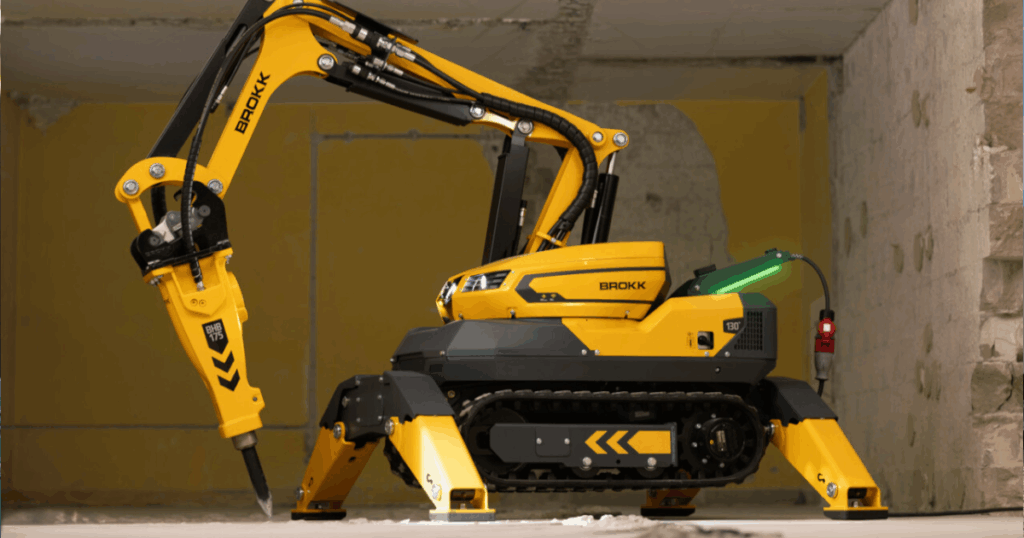Here’s our latest update highlighting the key news and trends shaping the future of cities and urban growth.
You Should Know
- The construction industry faces a severe global skilled labor shortage. In North America, about 500,000 additional workers are needed to meet demand, according to Willis Towers Watson. In the UK, over 30% of tradespeople are expected to retire within the decade, while in Japan a quarter of skilled construction workers are over 60. In Southeast Asia, the region will need 1.5 million more workers by 2025 to keep pace with demand.
- China is currently responsible for about 75 % of all utility‑scale solar and wind projects under construction worldwide—roughly 510 GW out of a global 689 GW pipeline.
- Hong Kong has the most skyscrapers in the world, with 560. Shenzhen, China is second with 444, and New York City is third with over 320. Here are the top 20 cities with the most skyscrapers.
Worth Watching
- The most dangerous building in Manhattan.
- Japan’s unconventional solution to the housing crisis.
- China’s new ‘Military City’ is 10x the U.S. Pentagon’s size.
Top Stories

Rise of the Robot Builders
Construction is undergoing a rapid transformation as automation and robotics shift from pilot projects to mainstream adoption. Powered by AI, machine learning, and advanced sensors, these technologies address labor shortages, safety concerns, and demands for faster project delivery.
Self operating equipment equipped with LiDAR, GPS, and computer vision can handle site surveys, excavation, grading, and precision assembly—tasks once requiring skilled human labor. Operating 24/7, they accelerate timelines, improve safety in hazardous environments, and integrate with digital platforms for real time, collaborative workflows.
Autonomous machinery such as smart dozers, excavators, and dump trucks is projected to surpass $24 billion in market value by 2030, while specialized construction robotics—bricklaying machines, material handling arms, exoskeletons—are set to exceed $3 billion.
Here are some notable automation and robotic companies revolutionizing the construction market:
- Built Robotics – Develops the Exosystem, an aftermarket kit that transforms standard heavy machinery like excavators into autonomous robots using GPS, cameras, and AI. These retrofitted machines handle excavation, grading, and pile driving on construction sites, particularly in large-scale energy and solar projects, improving safety and reducing operator labor needs.
- Dusty Robotics – Builds the FieldPrinter, an autonomous robot that prints full-scale floor plan layouts directly onto construction floors from digital BIM files. This automates layout work, dramatically reduces errors from manual measuring, speeds up the process from days to hours, and minimizes costly rework on large commercial projects.
- FBR – Developer of Hadrian X, an automated bricklaying robot capable of constructing a house’s brickwork in roughly one day. The system uses advanced stabilization technology to maintain precision in varying conditions, enabling rapid, consistent, and cost-effective residential construction.
- Boston Dynamics – Creator of Spot, a quadruped robot used on construction sites for automated inspections, mapping, and safety compliance monitoring. Spot can patrol job sites, check for issues such as missing hard hats, and capture environmental data, helping contractors save labor time and improve safety oversight.
- Brokk – Global leader in remote-controlled demolition robots used in construction, mining, tunneling, and industrial maintenance. Equipped with powerful hydraulic attachments, Brokk machines safely perform heavy demolition and material handling in confined or hazardous environments, dominating the demolition robotics market.
Gateway: America’s Top Transit Project
The Gateway Program is the largest U.S. transit infrastructure initiative currently underway, aimed at eliminating a century‑old rail bottleneck between New Jersey and New York. It will modernize and expand the busiest stretch of the Northeast Corridor—from Newark to New York Penn Station—by doubling track capacity, rebuilding the Hudson River route, replacing aging bridges such as the Portal Bridge, and upgrading the North River tunnel systems.
This critical 10‑mile section now carries more than 450 trains a day on just two tracks, creating chronic delays. Gateway will expand it to four mainline tracks, enabling both Amtrak and NJ Transit to run more trains with fewer disruptions.
Funded through a federal–state partnership, the Gateway Program is estimated at $16 billion, with about $12 billion in federal funding—the largest‑ever federal transit grant. The remainder will be supplied by New York, New Jersey, and other stakeholders.
At its heart is the Hudson Tunnel Project, a new double‑track rail tunnel beneath the Hudson River, projected to cost $16.1 billion and open in 2035. Once operational, the existing 1910 North River Tunnel—damaged by saltwater flooding during Superstorm Sandy—will undergo complete rehabilitation, extending its life for decades.
The program also tackles other choke points, most notably replacing the Portal Bridge over the Hackensack River. The new Portal North Bridge, a fixed, high‑span structure, will eliminate frequent delays caused by the current swing bridge’s mechanical failures and slow‑speed restrictions.
Beyond transportation efficiency, the Gateway Program is a major economic catalyst. Between 2023 and 2060, it is expected to generate $445 billion in benefits, support an average of 46,100 jobs annually, and spur $42.8 billion in construction.
Resiliency is another cornerstone. The Hudson Tunnel and other upgrades will make the corridor more resistant to climate impacts, helping protect reliability for the 800,000 daily riders who depend on this link.
Construction began in 2023, with early milestones—such as the Tonnelle Avenue overpass—set for 2025, Hudson Yards casing completion by 2026, full tunnel operations by 2035, and rehabilitation of the old tunnels by 2038.
Everything’s Bigger in Texas — Like the Hybergrid
America’s race to build the next generation of nuclear-powered AI infrastructure is set to accelerate with the launch of Hypergrid, a massive energy and artificial intelligence campus planned near Amarillo, Texas.
Led by Fermi America—co‑founded by former U.S. Energy Secretary and Texas Governor Rick Perry—in partnership with Texas Tech University, the project will combine nuclear, natural gas, and solar power to supply up to 11 gigawatts (GW) of capacity, enough for more than 8.2 million homes. The first 1 GW is targeted to come online by late 2026, marking an early milestone for the multi‑phase effort.
The nearly 5,800‑acre site offers major strategic advantages. It sits near the Department of Energy’s Pantex nuclear weapons plant, atop one of the nation’s largest natural gas fields, and adjacent to major U.S. gas pipelines.
The campus will also house 18 million square feet of AI data centers, positioning it as the largest U.S. energy‑driven AI complex and a cornerstone of domestic high‑performance computing capacity. This integration of large‑scale clean power and next‑generation computing infrastructure is designed to address surging demand for reliable energy in AI applications.
Fermi has applied to the U.S. Nuclear Regulatory Commission for licenses to build multiple 1‑GW reactors, with reviews underway. Interest in new nuclear projects has risen following executive orders from President Donald Trump aimed at expediting approvals and overhauling NRC processes—moves that have drawn both strong support for their potential to accelerate development and criticism over possible safety oversight gaps.
While Fermi has not disclosed the project’s total cost or financing, Hypergrid aligns with national priorities under the CHIPS and Science Act of 2022. The Act supports AI research, semiconductor development, and advanced energy initiatives, making the project a potential driver of innovation across multiple industries.
Texas Tech will contribute through workforce training, academic programs, and research partnerships. These initiatives aim to develop talent pipelines and foster collaboration between industry and academia, potentially making Amarillo a hub for clean energy innovation and AI‑driven industry in the United States.

Micro‑Apartments Sprout Across Germany
Germany has embraced micro‑apartments as a mainstream housing solution, and construction activity across major cities reflects a robust and growing sector.
In Europe, “micro‑apartment” or “micro‑living” often refers to units between 20 and 35 square meters (215–377 sq ft), sometimes as small as 18 m² (194 sq ft) for student housing.
Driven by a demographic shift toward single‑person households—projected to reach 44 percent by 2035—and rising urbanization, demand for compact, furnished living units is surging in Germany’s largest metropolitan and university regions. As of mid‑2024, around 500 micro‑living projects, including serviced flats, were under development, representing some 50,000 units in planning or building phases. An additional 25 projects with roughly 4,200 units are slated for completion by 2025, most located in Berlin and former West German states.
Individual developers are also scaling up. In Hamburg, one company recently completed nearly 100 purpose‑built micro‑apartments measuring 25 square meters (269 sq ft) each, meeting affordable housing criteria and renting at €600–700 per month, including utilities.
Investors are increasingly interested in this niche. A newly launched real estate platform aims to acquire and develop micro‑living residences across Germany’s top seven cities—targeting Berlin, Munich, and Frankfurt—and already holds a strong pipeline of projects. Analysts note that German micro‑apartment transactions have risen sharply, with substantial increases in investment and interest from both domestic and international backers.
Micro‑apartment complexes often offer shared amenities such as furnished suites, internet, bike storage, and communal kitchens or lounges. These features appeal to young professionals, students, and increasingly, seniors seeking flexible, maintenance‑free living.
Regulatory changes are also helping speed supply. In June 2025, Germany approved a draft law designed to streamline planning and building approvals—an important step given the national housing shortage and historically slow permit timelines.
All told, Germany now leads Europe in micro‑apartment development by volume, with thousands of units either built or in progress.
Big Deals
- Union Pacific is acquiring Norfolk Southern for approximately $85 billion, creating America’s first truly coast‑to‑coast freight rail operator.
- J.C. Penney portfolio of 119 stores sold to private equity for $947 million.
- AIR secures $23 million for eVTOL expansion and production.
- Motive raises $150 million to enhance AI-powered fleet solutions.
- Planted Solar secures $12 million to expedite solar project deployment.
- CoreWeave acquires NEST data center for $322 million.
Extra Reads
- World’s most powerful tidal farm to unleash abundant clean energy in Normandy.
- Copenhagen is transforming into a resilient “sponge city” model.
- Data centers will soon surpass the steel industry in renewable energy demand.
- DP Energy proposes a 1,400 MW wind farm in Queensland.
- California plans a $2.1 billion tunnel to bypass hazardous highway.
- 3,000 new homes to be built at site of abandoned airport in Queens, NYC.
- Developers anticipate affordable housing could soon become profitable.
- Urban planners use shade and materials to combat rising heat.
- Can small modular reactors spark a new phase of nuclear construction?
- Cheyenne to host massive AI data center using immense electricity.
- Egypt’s booming construction sector features a $565 billion pipeline.